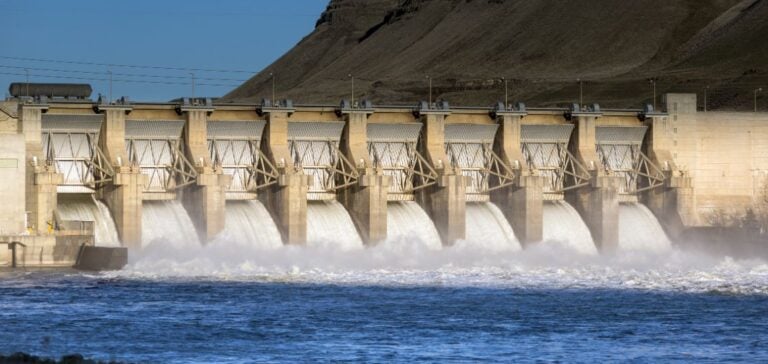The hydropower dams on the Willamette River in Oregon are at the center of a national debate, pitting energy needs against biodiversity conservation. With towering concrete walls and the absence of adequate pathways for salmon migration, these infrastructures, designed primarily for flood control, are raising questions about their future.
The U.S. Army Corps of Engineers initially proposed costly and complex solutions, such as giant mechanical traps to transport juvenile salmon in tanker trucks. This controversial idea, estimated to cost between $170 million and $450 million per device, was deemed ineffective by biologists and criticized by environmental advocacy groups and industrial users alike.
A Legislative Turning Point
In January 2025, President Joe Biden signed a law ordering the suspension of the Corps’ projects in favor of a comprehensive study on the impact of phasing out the dams for electricity production. This decision follows revelations by media outlets like *Oregon Public Broadcasting* and *ProPublica*, which highlighted the exorbitant costs and persistent environmental impacts.
According to a recent report by the National Oceanic and Atmospheric Administration (NOAA), the Corps’ proposed solutions would jeopardize salmon and steelhead trout, already listed as threatened species. The report recommends significant adjustments, including restoring more natural river flows and improving monitoring of migratory species.
An Economic Model Under Scrutiny
With only 1% of regional electricity production, the Willamette dams generate power at a cost five times higher than that of the major dams on the Columbia and Snake rivers. These figures reinforce criticisms of the financial viability of these infrastructures.
The Corps has also missed deadlines for studies requested by Congress in 2020 and 2022 to assess the impact of shutting down the hydroelectric turbines. Despite these delays, it continued to pursue 30-year projects involving hydropower investments, prompting frustration from lawmakers like Val Hoyle, a Democratic representative from Oregon.
Balancing Nature and Infrastructure
Returning water levels closer to those of a free-flowing river could resolve some of the salmon migration challenges. However, this transition would not be without consequences: downstream cities face potential issues such as managing the sediment released from reservoirs, as occurred in 2023 when dam drainage temporarily compromised drinking water quality.
Congress has mandated the Corps to evaluate solutions for downstream challenges, including upgrading drinking water systems in affected cities. A little-known provision allows the Corps to cover up to 75% of the cost of such infrastructure, but this option has never been used in Oregon.
Future Prospects for the Willamette
For Indigenous tribes like the Confederated Tribes of Grand Ronde, salmon preservation is both a cultural and environmental imperative. Kathleen George, a tribal council member, has called for accelerating efforts to restore river ecosystems.
The decisions ahead will have significant implications not only for Oregon but also for other regions where aging infrastructure must adapt to modern requirements. The management of the Willamette dams could become a model for reconciling renewable energy, biodiversity, and economic viability.






















